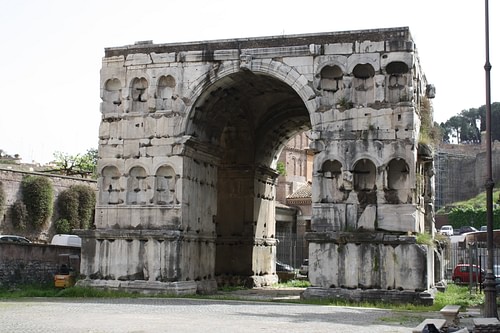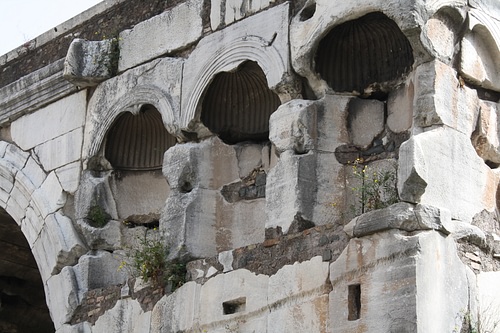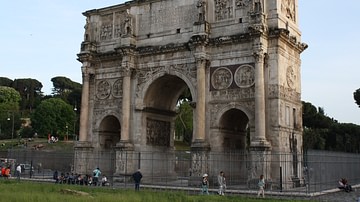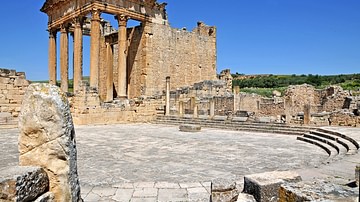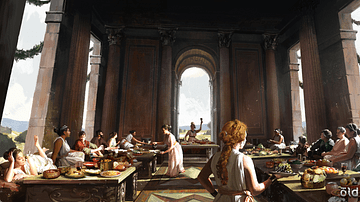The Arch of Janus, erected in the 4th century CE, stands in the forum Boarium of Rome and was most probably set up as a boundary-marker rather than a commemorative triumphal arch. The four-way marble arch stands over the Cloaca Maxima or Great Drain which ran down to the river Tiber.
The monument presents an imposing squat block of masonry and stands 16 m high and 12 m wide with an archway on each of its four sides. The Roman Regionary Catalogues mention an 'Arch of the Deified Constantine' somewhere in the vicinity and some scholars have identified the Arch with that. The exact date of the arch's construction is also unknown but pottery shards used in parts of the concrete vaults suggest a date some time in the 4th century CE. The marble blocks of the arch display evidence of having been previously used elsewhere.
Each pier of the arch has two rows of three niches, each topped by an elegantly carved semi-dome made to resemble a clam shell. It would seem likely that statues would have adorned these niches but, unfortunately, none survive. Small detached columns once flanked the niches but have also since been lost. The keystone at the apex of the central arch on the north side is carved to depict Minerva, the keystone on the east side depicts Roma. Originally, the arch would have had an upper story, probably the standard rectangular shaped attic, although, a pyramid has also been suggested. There is also a staircase within the north-west pier which would have given access to this upper story and also leads to upper chambers within the pier itself.
The monument, like many other buildings from antiquity, suffered in later times, particularly in the Middle Ages when it was converted into a fortress. In 1830 CE a superstructure of brick and concrete was removed from the monument in the mistaken belief that this had been a part of the fortifications the Frangipani had added. The original iron pins which held together each block of marble were removed in the Middle Ages resulting in the ugly pock-marked look of the monument today. The arch has also suffered severe damage due to weathering and environmental pollution and now stands rather forlornly, fenced off and surrounded by modern residential buildings.
